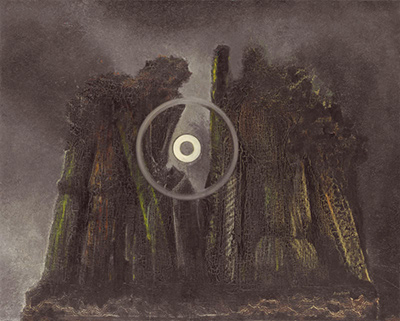Forest and sun portrait is an oil canvas which is located at New York City in the New York museum of contemporary art. This painting was created by Max Ernst, a very famous artist. Most of the time Forests appear in his works, due to the environment he was brought up.
Forest and sun play a central role in Ernst's representation, which was combined between 1925 and 1928 in three decisive years of experimentation. During this time Ernst developed a raster method (scraping), in which the shapes of objects that are under the canvas become visible and are cleaned with a spatula on a coloured surface. With the help of a collage (insert) and a pop-up window (rubbing), Ernst unexpectedly and poetically connected the elements of the outside world, which led to surreal "landscapes of the mind". This painting is one of the first series by Ernst dedicated to painting in the forest and the sun. Its sun shape, which dominates the flora, is often associated with romance.
In his many childhood memories, Max Ernst often spoke of his fear and passion for the forest that surrounds his home. He wrote about the feeling of "joy and oppression" and what the romantics called "feelings for nature". With these terms, Ernst continued the romantic landscape tradition of romanticism, which was an invisible kingdom in nature. This mysterious and dark forest scene dates from among the most inspired periods in Ernst's profession.
Inspired by the proclamation of the surrealist leader Breton Andre about "pure psychic automatism" as an inventive ideal, he created an innovative hacking technique named after the method - a relief pattern (for instance the surface of a section of wood) on paper or oil painting. In Forest and Sun, Ernst made use of this method to create a scared stiff forest that was filled with a sense of primitiveness in the future. The artist scraped almost dry paint on the oil painting (he called this process grattage) and created a rotating sun in the middle of the composition. He wrote six dissimilarities on the topic of forest and sun. As with the other five paintings, tree trunks offer a letter on behalf of the artist: in this instance, the capital letter M.




